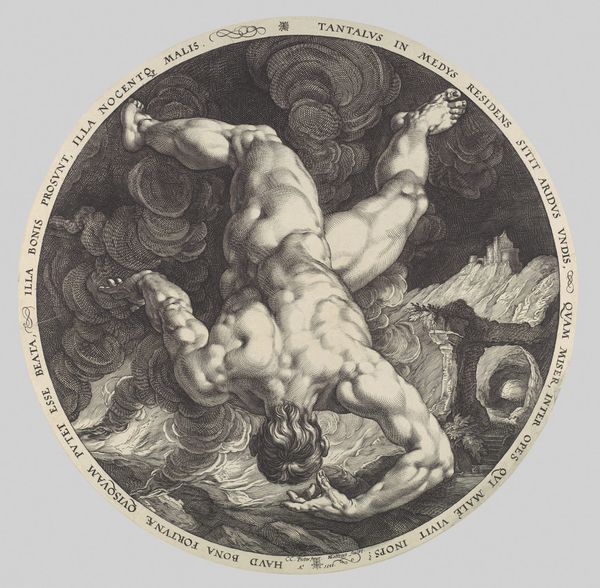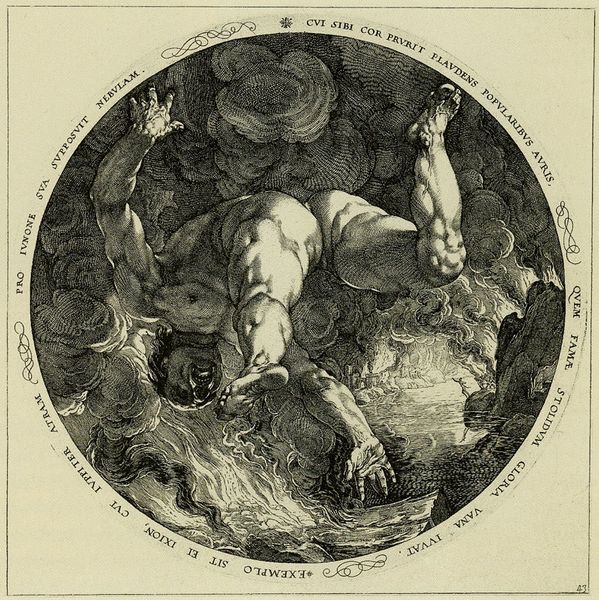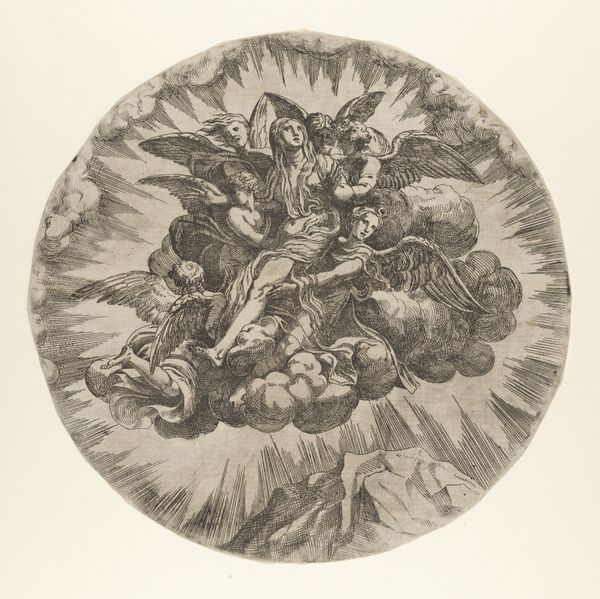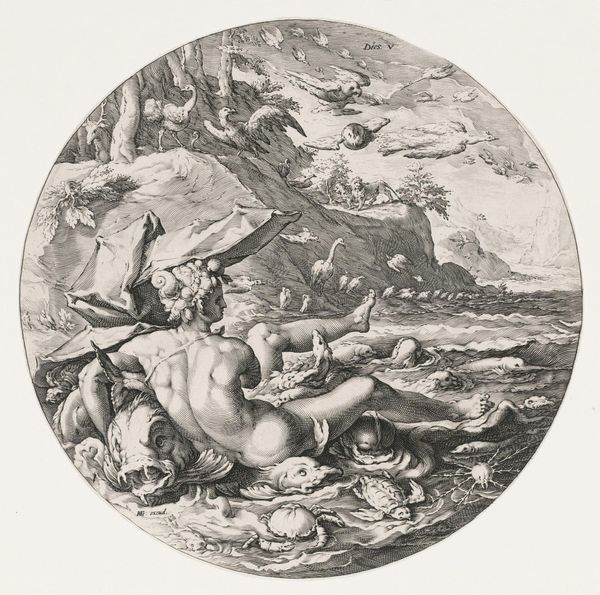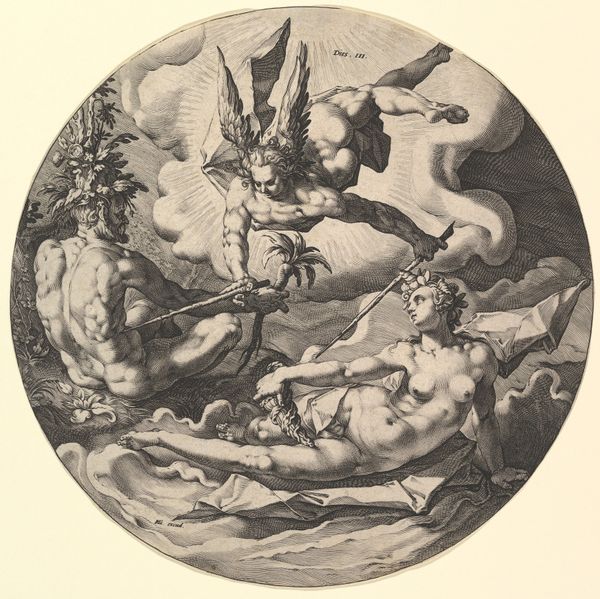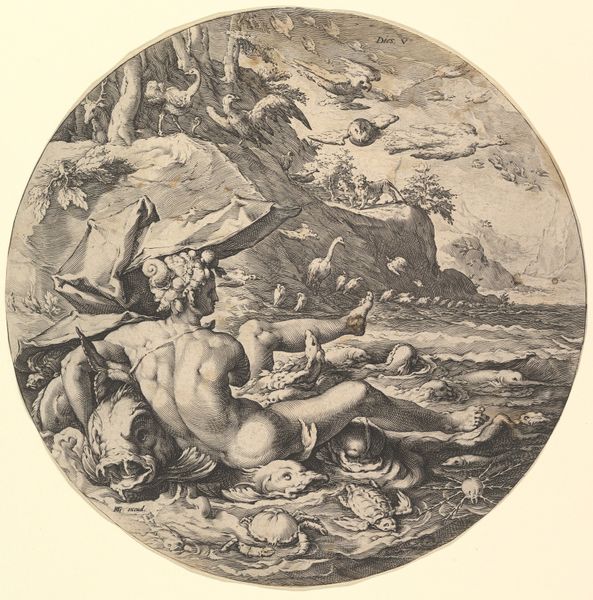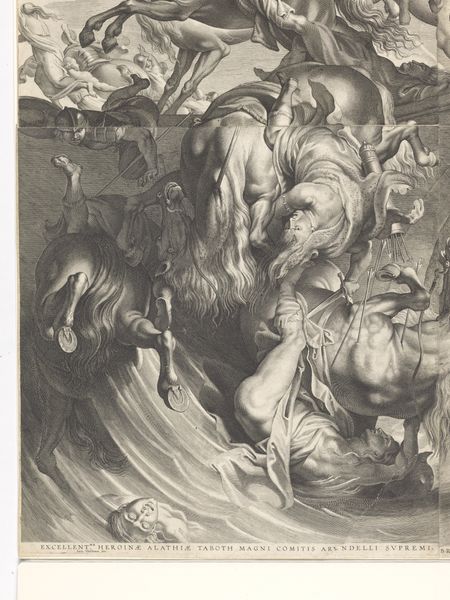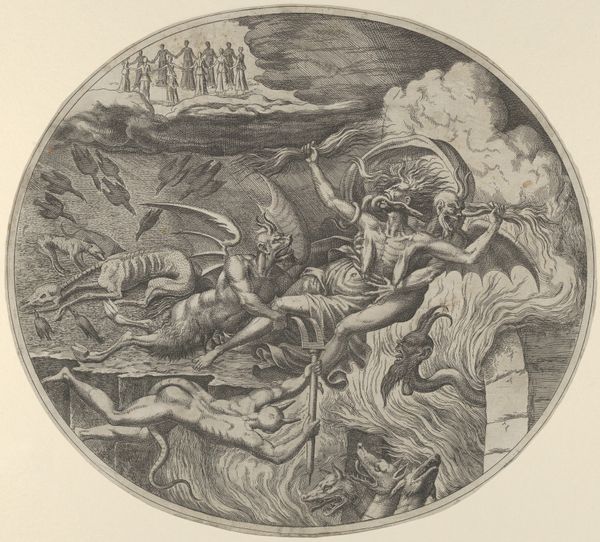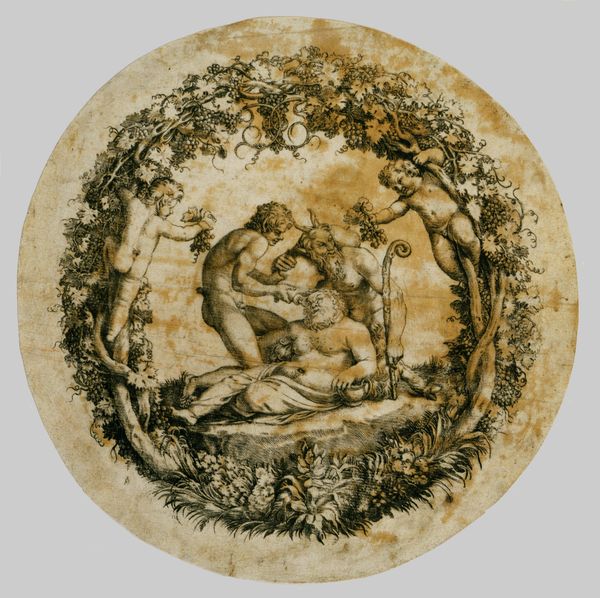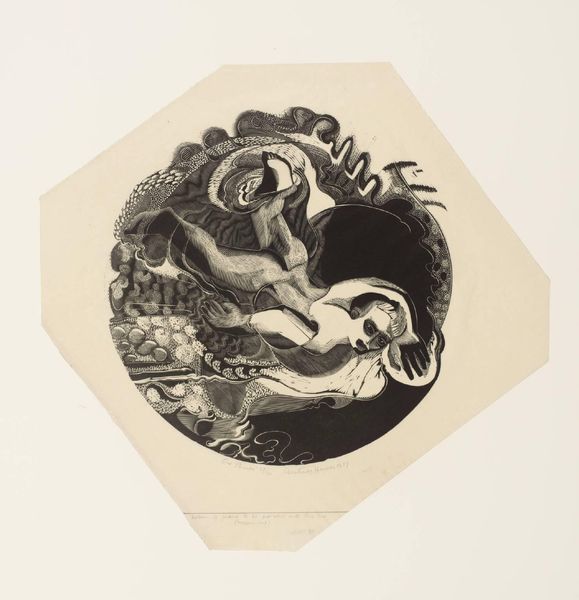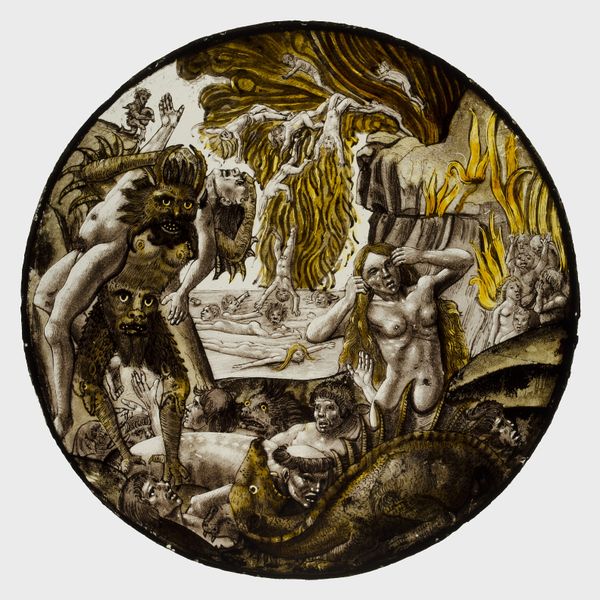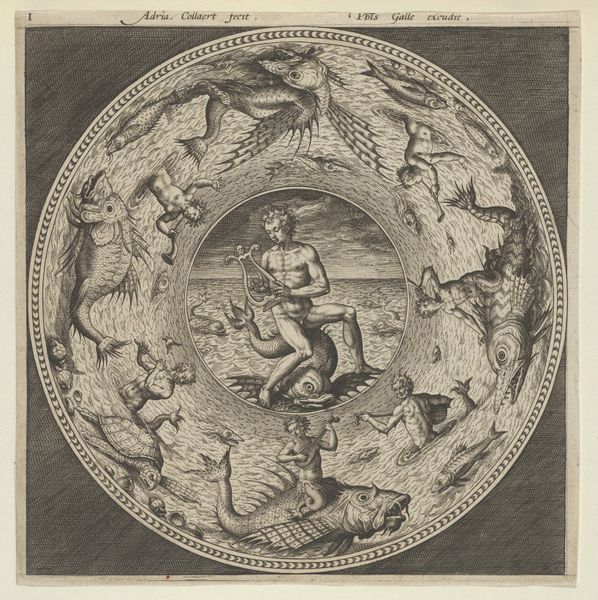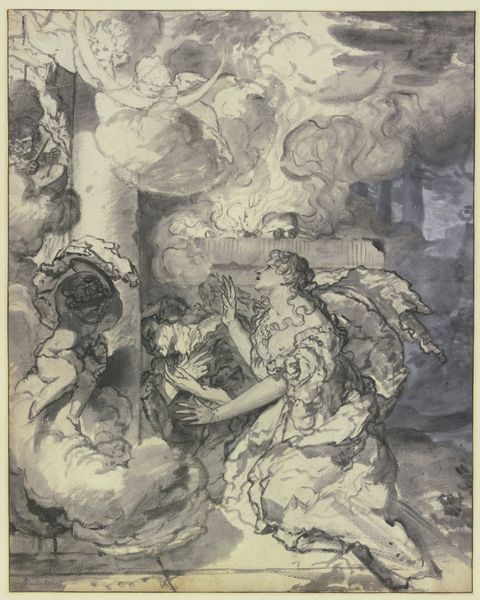
drawing, print, graphite, engraving
#
drawing
#
allegory
# print
#
mannerism
#
figuration
#
graphite
#
history-painting
#
northern-renaissance
#
graphite
#
engraving
#
male-nude
Dimensions: Sheet: 13 5/8 x 13 7/16 in. (34.6 x 34.1 cm)
Copyright: Public Domain
Curator: We are now viewing "Ixion, from 'The Four Disgracers'," a print made around 1588 by Hendrick Goltzius, currently held in the collection of the Metropolitan Museum of Art. Editor: What strikes me immediately is the figure's intense distress. The swirling clouds and precarious, almost tumbling, pose create a powerful sense of unease. And it's all rendered so meticulously in graphite and engraving—quite a feat. Curator: Indeed. This image depicts a scene from Greek mythology. Ixion, King of the Lapiths, attempted to seduce Hera, Zeus's wife. As punishment, Zeus tricked him with a cloud made in Hera's image, and then chained him to a burning wheel in Tartarus for eternity. The print itself is not just an illustration; it serves as an allegory of vice and punishment. Editor: It's interesting to consider the labour involved in creating such a detailed image through engraving. The material reality—the tools, the graphite, the precise hand movements—contributes significantly to its impact. Think of the skill necessary to convey the textures, the musculature, the billowing smoke with such accuracy. Curator: Exactly. Goltzius was deeply interested in humanist ideals. This print also makes potent arguments about power dynamics. Consider who gets to wield authority. The inscription frames Ixion as a cautionary figure against unbridled ambition and lust. The image critiques abuse of power and class, presenting this historical punishment as more than personal failing. Editor: Right. The means of production here aren’t neutral. The printing process allows for the mass dissemination of these moralizing narratives. So who consumed this imagery, and how did it reinforce existing social structures and class hierarchies? That, to me, is part of its power. Curator: It shows how artistic mediums become tied to not only an author's beliefs, but the ruling class and social norms. Editor: It is worth remembering the social context to challenge what power these images hold. Curator: Yes, examining those values can illuminate so much about society and its values at the time the piece was created. Thank you.
Comments
No comments
Be the first to comment and join the conversation on the ultimate creative platform.
